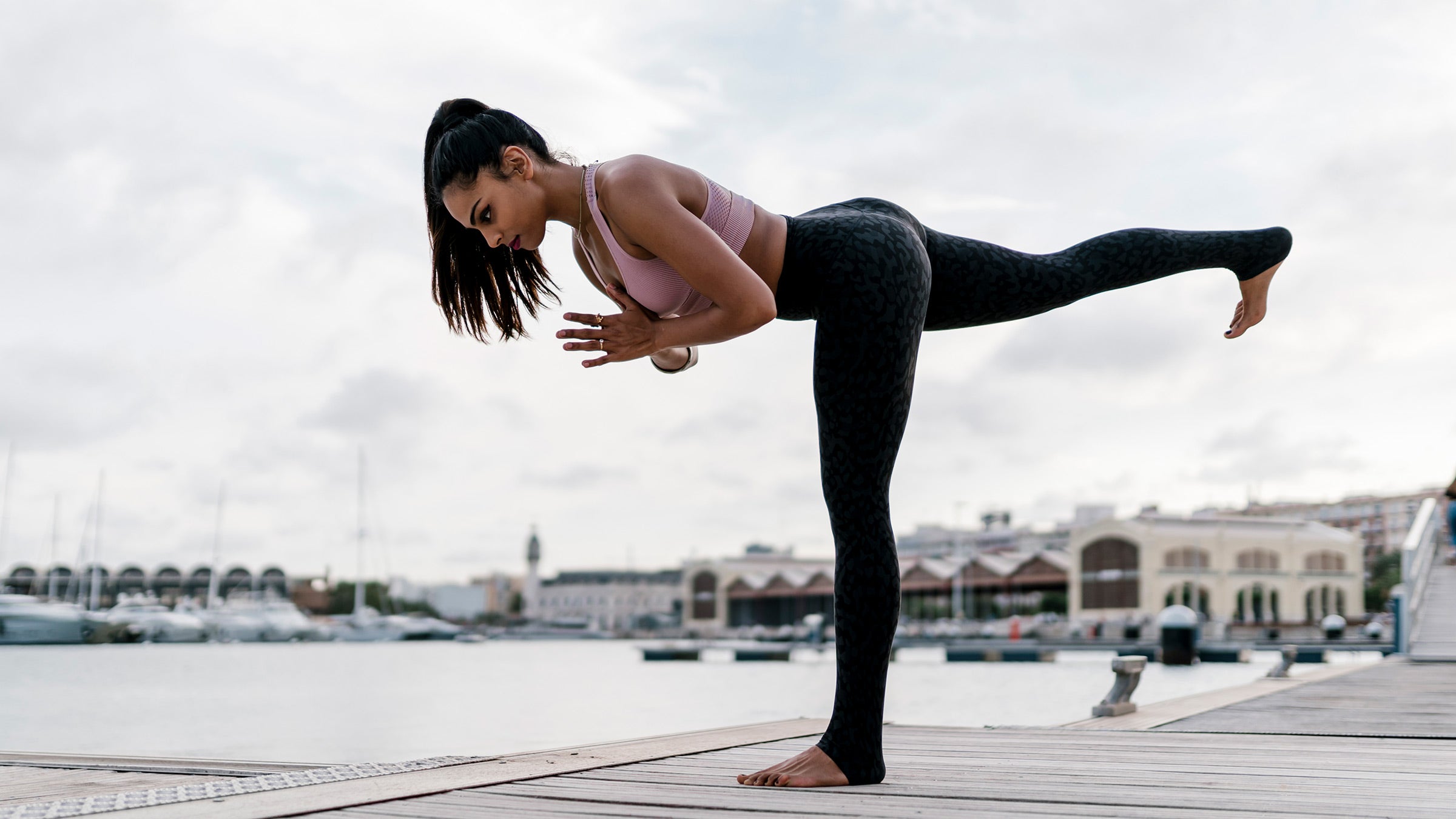
Yoga is a popular form of pain relief that has been discovered by many people around the world. The exercises are very flexible and anyone can perform them regardless of their level of fitness. Yoga is a spiritual practice that can be used to strengthen and stretch muscles. Yoga was originally practiced in India to relieve pain from the neck and knees. Depending on the type of pain you have, yoga may be the right option.
Yoga for pain relief helps the body to balance itself. People who are suffering from chronic pain can manage it more effectively by doing this. The exercises help reduce inflammation, pain perception, mobility, and pain. It is vital to speak with your physician before beginning any yoga program. This way, you can begin a routine that will work well for your unique needs and achieve the most benefits. Yoga exercises can also teach you about mindfulness.

The headache is the biggest problem area for females. The headache can be caused by hormonal imbalances, stress, and poor sleeping habits. A holistic approach to yoga for pain relief can ease the symptoms and reduce the frequency of headaches. Also, headaches are often caused by pain in the neck. Yoga can help relieve neck pain. While it is important to seek professional medical advice before you begin, a good yoga instructor can provide guidance on the most effective postures for your condition.
Many people think of yoga as relaxing and stretching. However, it can help those with chronic pain. Regular yoga practice is a great way to improve your quality life and reduce pain. This type of exercise will not work for everyone, but it is a great way improve your overall health. Yoga for pain relief is a great option, so it's worth considering taking a few classes.
If you are searching for holistic treatments for pain, there are many options. Controlling your breathing is one of the most effective techniques. Visualization is another technique that can be used to help with pain. Visualization is a powerful tool that helps you to focus on the pain and let go of any tension. It can bring relief to your mind and body.

You should choose a yoga class that suits your needs. Some yoga classes are slower and gentler than others. Others have many more challenging poses. Talking to a professional is the best way to find out which type of yoga is right for you. A class that is gentle enough to ease your back pain will be the best. Although most classes can help you strengthen and stretch your back muscles, they won't cause any severe injuries.
FAQ
Which workout is best to build muscle?
When you are building muscle mass, there are two main exercises you need to do. These are isolation exercises and compound moves. While isolating exercises target specific muscles, compound movements are designed to focus on multiple muscle groups at once.
It is important to do exercises that work all of your major muscles groups. This ensures that you are always working hard during each session.
MyFitnessPal, an app that tracks your actions, can be used to help you keep track. It allows you log everything, including calories burned and weight lifted. You can also make custom meal plans according to your goals.
Is it true that kidney stones can be caused by overeating protein?
Protein helps maintain healthy bones and tissue. But consuming too much protein can lead to calcium excretion through urine. This can lead to kidney stones.
It's important to note that not everyone gets kidney stones after eating more than 2 grams of protein per kilogram (2.2 pounds) of body weight. You don't have to eat a lot of protein to get kidney stones.
You can prevent kidney stones by watching your sodium consumption. Sodium regulates the body's water balance. Too much sodium can cause kidney stones.
You can also reduce your intake of proteins if you develop kidney stones. The majority of adults need protein for half their daily caloric needs. A reduction in protein intake will likely result in weight loss.
If you do decide to eat more protein, don't go overboard. Aim for less than 20% of total calories from protein.
How To Get Rid Of Belly Fat Fast?
There are many ways to quickly reduce belly fat. One option is to eat less calories and drink more water.
Another way is to increase your metabolism by participating in activities such as running and swimming.
To quickly reduce belly fat, avoid sitting too much. Instead, get up and move around throughout the day. This will help you lose more calories.
If you've tried all the methods and are still struggling with belly fat, there's another option.
A belt is a device that allows you to do this. It tightens around the waist when you sit.
This will make you feel uncomfortable and allow you to move about. This causes you to burn more calories, and your belly fat will decrease.
How fast can I transform myself?
You must change your mindset. First, you must decide to make a change.
Once you have decided that you want to change, then you need to commit yourself to work on your fitness goals for at least 3 months.
Then, find a program to fit your life.
Setting realistic expectations is also essential. Don't spend your hard earned money on a gym membership if you don't have the motivation to work hard.
Instead, make use of your time outdoors.
Walk around your block for an hour every day to burn calories and help you lose 1 lb per month.
Once you know what your plan is, it's time to start organizing your life in accordance with this plan.
This means that you should schedule time for exercise every morning before heading to work, and allow yourself to take breaks throughout the day.
You should also reward yourself for reaching milestones. This could include buying clothes or accessories that reflect your success.
Do I need to exercise every morning?
No! You should do at least 30 mins of moderate-intensity activity 5 days per week. It means you need to exercise hard enough or walk fast enough that you are slightly out-of- breath.
Statistics
- An estimated calorie range for moderately active adult males falls between 2,200 to 2,800 calories per day, depending on age. (eatright.org)
- By John Thompson Take a whopping 38% off a set of PowerBlock Pros. (menshealth.com)
- Get free shipping and 25% off today. (healthline.com)
- Are You One of the 20% of Guys (mh.co.za)
- According to the American Academy of Dermatology (AAD), men over 50 are at a heightened risk of developing it. (healthline.com)
External Links
How To
What nutrients do men need each day?
Men need healthy growth and development. The body requires vitamins and minerals, protein, carbohydrates, fats (fats), water, fiber, as well other essential elements.
Males also require specific nutrients at certain times of the day. For example, when you sleep, your body uses energy from food to make hormones, antibodies, and enzymes. Protein is needed to build muscles and repair tissue damaged when you wake up.
Your body stores extra energy as glycogen and breaks down fat at night. Your body will still need nutrients, but it will require fewer calories during this time. If you feel hungry, you may consider having a snack during the evening.
To fuel your muscles while you train, you will need sufficient carbs as well as protein. You may feel sore muscles if you exercise hard.
To prevent this, you should eat carbs as well as protein within the first two hours after training. Your body will use stored glycogen to produce glucose for energy.
After your workouts, you should eat protein immediately. This prevents muscle tissue being destroyed while you're sleeping.
Your body makes lactic acid when you are doing intense physical activities. It is a form of lactic acid that builds up in the bloodstream. This causes fatigue. To avoid this, you should eat foods rich in carbohydrates, such as fruits and vegetables.
Carbohydrates can give your body the energy it requires to recover from intense exercise.
You may also want to include lean meats and fish, as well as yogurt, cheese, yogurt, beans and nuts in your diet.
All of these foods have high-quality protein. Protein promotes muscle growth and repairs damaged tissues. Protein also supplies the amino acids your body requires to make sex hormones, such as testosterone.
A healthy skin, nails and joints requires sufficient dietary fats. Healthy men require between 20% and 35% of total caloric intake from fat.
Fat helps keep your heart strong and protects against cancer. It helps keep your brain working properly.
Most of the fat you need can be obtained from vegetable oils, including sunflower oil (or soybean oil), peanut oil, peanut oil, soybean oil, and peanut oil.
These oils are high-in monounsaturated, unsaturated fatty acid (MUFAs). MUFAs help lower cholesterol and reduce inflammation. They protect your cells against free radical damage.
Saturated fats (SFAs), are found mainly in animal products such as meat, milk products, and butter. SFAs increase LDL ("bad") cholesterol, and increase triglycerides. They can also increase weight and reduce belly fat.
Polyunsaturated oils (PUFAs), are found in plant-based foods like nuts, seeds and vegetable oils. PUFAs are good for your heart health and help to reduce inflammation. They can also control blood sugar levels and cholesterol.
Low HDL ("good") cholesterol can lead to erectile problems in men. A high intake of saturated fats leads to higher levels of bad cholesterol.
Red meat and pork are a common source of prostate problems in men who eat a lot. Nitrites convert to nitrosamines when cooked at high temperatures. These compounds cause cancer.
Most processed meats have nitrites and harmful chemicals. Avoid them completely.
The American Heart Association recommends that you limit your intake of red meat to 2 per week. Instead, choose poultry and fish, legumes, tofu or whole grain bread as your main source of protein.